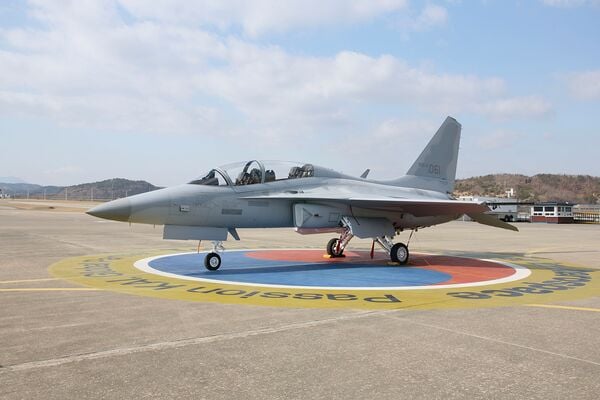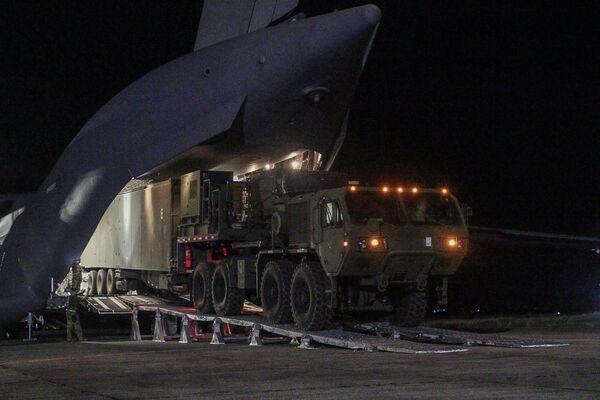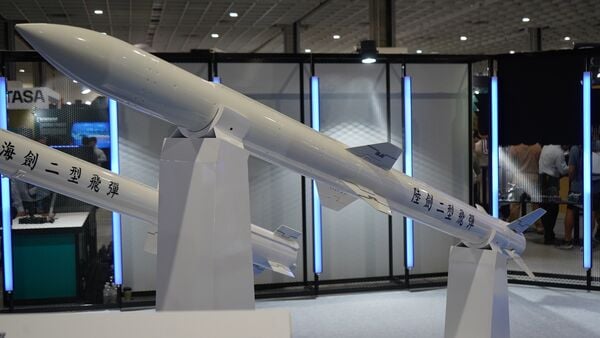- About
- Intara
- Capabilities
- Advisory
- Resources
- News
- Store
Russia to move naval drills away from Irish coast
03 February 2022
by Tony Roper


The Project 11711 large landing ship Pyotr Morgunov , one of three Northern Fleet large landing ships headed to the Mediterranean. (Michael Nitz)
Russia has agreed to relocate a live-firing exercise that was planned to take place in international waters in the Irish Sea, Moscow's ambassador to Ireland has announced.
The Irish Aviation Authority was originally notified on 21 January of the Russian Navy's plans to carry out the live artillery and missile firing in early February, 240 km southwest of the Irish coast. However, the announcement raised objections from the Irish government and Irish fishing groups.
In a press release issued on 29 January, Russian ambassador to Ireland Yury Filatov said that in response to requests from the Irish government and the Irish South & West Fish Producers Organisation, it was decided that the exercises would be moved to outside of the Irish exclusive economic zone (EEZ) “with the aim to not hinder fishing activities by the Irish vessels in traditional fishing areas”.
The Russian Navy has scheduled multiple out-of-area exercises that will continue throughout February across all of its areas of responsibility. To this end, it has been transiting ships from bases to exercise areas since mid-January.
On 26 January the Russian Ministry of Defence (MoD) announced that a detachment of Northern Fleet ships had entered the Barents Sea to operate in conjunction with the Arctic Expeditionary Group of Forces and Troops. The flotilla was led by Project 1164 Slava-class cruiser Marshal Ustinov, with Project 22350 Admiral Gorshkov-class frigate Admiral Kasatonov and Project 1155 Udaloy-class destroyer Vitse Admiral Kulakov as escorts.
They will likely join with the two Baltic Fleet Project 20381 Steregushchiy-class corvettes, Soobrazitelny and Stoikiy , which departed Baltyisk on 24 January and commenced their transit of the English Channel on 29 January.
Meanwhile, the three Northern Fleet large landing ships of the 121st Landing Ship Brigade (LSB) that were reported as transiting the North Sea towards the English Channel on 22 January – the Project 775M Ropucha-class ships Olenegorskiy Gornyak and Georgiy Pobedonosets , and the Project 11711 Ivan Gren-class ship Pytor Morgunov – did not loiter in the Irish Sea area as had been expected, and have instead headed to the Mediterranean, following the three Baltic Fleet Ropucha-class large landing ships of the Baltic Fleet's 71st LSB, Kaliningrad , Minsk , and Korolev .
They will all join the continuous Russian Navy deployment in the Mediterranean, which currently includes three Project 636.3 Improved Kilo-class diesel-electric submarines – Krasnodar, Novorossiysk , and Rostov-on-Don – the Project 11356 frigate Admiral Grigorovich and the Project 21631 Buyan-M-class corvette Vishny Volochek. The latter is to be replaced by Orehovo-Zyevo, which transited the Bosporus on 21 January, with the Project 12700 Alexandrit-class minesweeper Vladimir Emelyanov following a day later.
The Pacific Fleet's Project 1164 Slava-class cruiser Varyag and Project 1155 Udaloy-class destroyer Admiral Tributs, along with the support tanker Boris Butoma, were noted in the Gulf of Aden heading towards the Red Sea and Suez Canal on 26 January, confirming the MoD's announcement that they would be taking part in the joint exercises in the Mediterranean.
In addition to the out-of-area deployments, regional exercises are also taking place around all of the Russian Navy's main bases and areas of operations.
The Northern Fleet's Project 1144 Kirov-class cruiser Pyotr Velikiy carried out air defence exercises at Severomorsk, defending the navy base using its own systems and via data produced by the regional air defence centre of the Northern Fleet. This was in conjunction with multi-ship exercises working on anti-submarine, anti-surface, and artillery tasks in the Barents Sea to establish a defence around the Kola Peninsula bastion.
The same taskings were carried out by the ships, submarines, and aircraft of the Baltic, Black Sea, and Pacific fleets, as well as the Caspian Flotilla, according to multiple press releases by the MoD.
Update: KAI proposes T-50 for RTAF fighter requirement
17 April 2024
by Akhil Kadidal


The KAI T-50 is a tandem-seat multirole trainer aircraft that is in service with Indonesia, South Korea, and Thailand. (KAI)
Korea Aerospace Industries (KAI) has proposed a sale of T-50 multirole trainer aircraft to the Royal Thai Air Force (RTAF), which seeks to acquire new combat aircraft from fiscal year (FY) 2025.
A KAI spokesperson told Janes on 17 April that the proposal for the T-50TH variant was submitted in November 2023. The T-50TH is being pitched for the possible acquisition programme as the RTAF “has already purchased and operates the same model [of aircraft]”, the spokesperson said.
The spokesperson added that the T-50TH is being proposed as it is a multirole aircraft that “is not only suitable for advanced training but also capable of real combat in urgent situations”.
Janes understands that KAI's proposal is in response to an unofficial request for proposals (RFP) issued by the RTAF in the second half of 2023. In its 2024 White Paper, the RTAF detailed a plan to procure 12–14 fighter aircraft to replace ageing Lockheed Martin F-16A/Bs of its 102 Squadron from FY 2025 to FY 2034.
MRC hits first deployment milestone
16 April 2024
by Meredith Roaten


Exercise ‘Salaknib 24' is part of US Army Pacific's Operation Pathways experimentation series. MRC arriving in North Luzon, Philippines, in early April. (US Army)
A recent joint exercise in the Philippines marked the US Army's first ever deployment of its Mid-Range Capability (MRC), according to a press release on 15 April.
General Charles Flynn, commanding general of US Army Pacific, announced in October 2023 that MRC would be deployed in the Pacific region in 2024. Charlie battery in the 1st Multi-Domain Task Force (MDTF) was deployed during Exercise ‘Salaknib 24' in North Luzon, Phillippines, in early April, according to an army statement.
MRC – which consists of a battery operations centre, four launchers, prime movers, and modified trailers – arrived in theatre on 7 April in the back of a C-17 Globemaster III airframe and was deployed on 11 April.
Taiwan test-fires Sky Sword II air-defence system
16 April 2024
by Kapil Kajal


A mock-up of the Sky Sword II – locally known as TC-2 land-based missile – is pictured at TADTE 2023. The missile structure consists of the active radar seeker, followed by the electronics section, proximity fuze, warhead, and rocket motor, ending in the exhaust. (Janes/Kapil Kajal )
The Republic of China Army (RoCA) test-fired a land-based short-to-medium-range air-defence system known as the Sky Sword II for the first time in Pingtung County, the Taiwan Ministry of National Defense (MND) said via its Military News Agency on 16 April.
The test was conducted by the RoCA's 43rd Artillery Command and 21st Artillery Command to verify the effectiveness of the system, the MND said. The Sky Sword II system “successfully hit the target” during the test, the MND added.
Sky Sword II is a medium-range air-to-air missile (AAM) for Taiwan's fighter aircraft. Based on the Sky Sword II AAM design, the island's state-owned National Chung-Shan Institute of Science and Technology (NCSIST) developed a land-based Sky Sword II air-defence system and a naval variant known as Sky Sword II N.
An NCSIST official told Janes
Russia has agreed to relocate a live-firing exercise that was planned to take place in international...
Latest Podcasts
Iran Israel analysis
In this podcast Janes analysts discuss the Iranian attacks on Israel on the 14 April. They highlight the military systems used by Iran and the performance and impact of these on Israel. They also discuss the implications of this attack goi...
Listen nowJanes Case Studies
Using Janes Intara to build a common intelligence picture: Russian build up on the Ukrainian border
View Case StudyNews Categories
 Security Details
Security Details